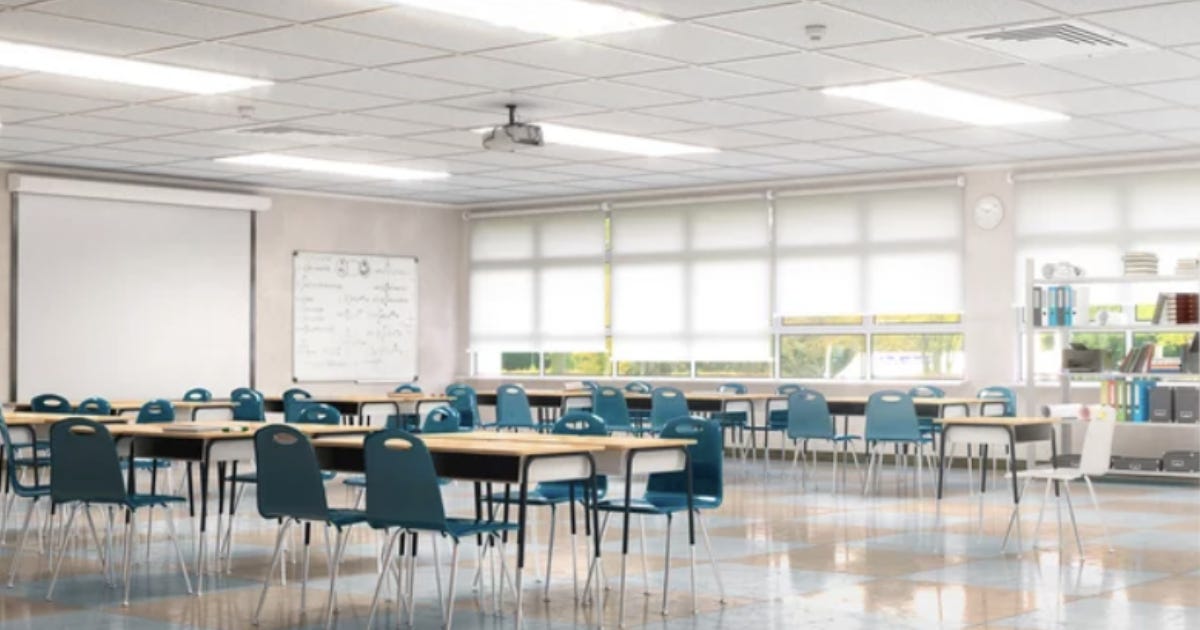Alberta teachers’ union rejects mediation plan, strike to continue
The Alberta Teachers’ Association has rejected the provincial government’s proposed “enhanced mediation” process, confirming that the strike will continue and kids won’t get to return to school.
The Alberta Teachers’ Association has rejected the provincial government’s proposed “enhanced mediation” process, confirming that the strike will continue and kids won’t get to return to school on October 20.
The ATA accused the government of crafting a biased proposal that avoids addressing the core issues behind the walkout — namely, large class sizes and classroom complexity.
“Teachers will not accept a process designed to avoid the real issues in Alberta’s classrooms. The government’s proposal is biased, protects its own political interests and fails to address what teachers, students and parents are saying every single day: class sizes are too large, and classroom complexity is unmanageable,” said ATA president Jason Schilling.
Alberta Premier Danielle Smith responded to the news promptly. At a Friday press conference, she explained that her government remains “deeply disappointed” that the ATA refused the proposal and further delayed students from returning to school.
Smith said the mediation plan would have enabled both sides to keep negotiating with a third-party mediator while students resumed classes.
“Government is trying to put kids, families and teachers first and bring an end to this strike,” she said. “We want the same things as the ATA: more classrooms, more teachers, more pay for teachers, and more educational assistants.”
Education Minister Demetrios Nicolaides said that students were bearing the brunt of the ATA’s refusal.
“By rejecting our offer, students will continue to face the consequences of this strike with no clear path to getting them back,” he said. “Students have missed out on valuable learning, sports activities, personal development, social interaction and more. These kids have already been through enough with COVID, and keeping them out of school again hurts them even more.”
He reiterated that the ATA and government want the same things: more teachers and bringing down class sizes.
Schilling previously launched the strike with few clear demands. He stuck to repeating broad themes of “chronic underfunding,” “complex classrooms,” and “fair pay.”
The strike follows teachers overwhelmingly rejecting two government settlement offers—one recommended by a mediator and another negotiated through the Teachers’ Employer Bargaining Association.
The deal included hiring 3,000 new teachers and 1,500 educational assistants over three years, plus a 12 per cent salary increase, with more than 95 per cent of teachers seeing a raise of up to 17 per cent. Premier Danielle Smith explained in Friday’s press conference that the raise would have seen teachers’ salaries start at $70,916 and go up to $119,033.
Some brave teachers have spoken out against the ATA.
Smith added that her government has invested $8.6 billion this year to build 130 new schools. She said the latest offer would have cost taxpayers an additional $2 billion, on top of the $2.6 billion already committed, amid the province’s $6.5 billion budget deficit this year.
The Canadian Taxpayers Federation has warned that Albertans cannot afford this extra $2 billion, noting the province’s $84.3 billion debt this year and that it has increased funding for education by 33 per cent since 2021-22.
Smith reiterated that there are 51,000 teachers and 740,000 students, which translates to approximately 14 students per class. As for full-time teachers, the 35,162 would still be a student-to-teacher ratio of 21.
She said that it would be better to focus on the real solution: addressing classroom complexity.
The government’s proposal reportedly excluded discussions on student–teacher ratios, prompting the union to reject the offer outright.
“The government says it wants a settlement, yet refuses to even discuss the issues that caused this strike action. Teachers are absolutely committed to reaching a fair and negotiated agreement, but that requires a serious partner at the bargaining table—one willing to acknowledge the crisis in education and take real action,” said Schilling.
In a letter to the province, ATA executive secretary Dennis Theobald said teachers want to return to classrooms but won’t do so without guarantees of improved conditions and fair compensation, adding that “as strong and free Albertans, we cannot let this crude threat drive us to step back from our principles.”
Theobald’s letter also cited recent data from the Teaching and Learning International Survey (TALIS), released Oct. 7, showing that 42 per cent of Alberta teachers report high stress levels — more than double the global average — and work an average of 47 hours per week.
The report, partially funded by the Alberta government, highlights rising concerns over burnout, behavioural challenges, and inadequate classroom support.
The TALIS report did not include data from any other provinces, nor the country as a whole.
The Teachers’ Employer Bargaining Association, representing the government and school boards, has not yet responded to the ATA’s latest proposal.
Smith said that if students do not return to class by the time the Legislative Assembly sits again, on October 27, it would cause “irreparable harm” and that back-to-work legislation would be implemented that week.




